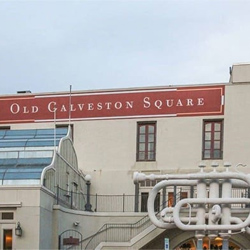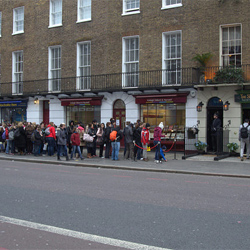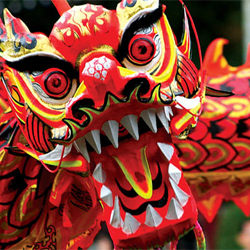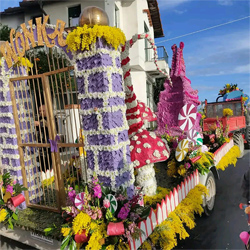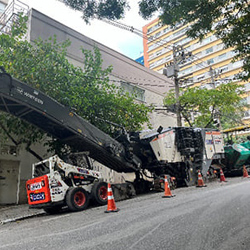Each day of the week, the mercato pop up on different streets. On Mondays it will be such-and-such street; Fridays such-and-such street, and so on. You can of course find fresh fruits and vegetables, but you’ll also see butchers and fishmongers selling out of food trucks with their awnings pitched out the side. Aside from food, there are everyday essentials, clothing, plants, and all kinds of others offerings. You can probably buy everything at the mercato except a new pet.
When I first started going to these markets, the vendors would start shouting “Hey, beautiful!” and “Special deals for lovely young ladies!” the moment I stepped into the street. I enjoyed the compliments and would smile to myself as I passed. So I was a little disappointed when I realized that the vendors were simply directing them at the crowds and not at me… and even more disappointed when I realized they had all tricked me into buying way more food than I needed. Not because they added “special extras” to my bags for free, but because they’d fill them with way more than I asked for and grin while they rang it all up for full price. It wouldn’t be a big deal if it were food that stays fresh, but the produce vendors were as bad as everybody else. Frantically trying to sell off the fruits and vegetables that were getting past their peak, they’d pretend (?) not to hear me even if I told them they were giving me way more than I needed!
Generally speaking, there are two types of mercato. There are the large-scale markets that run from morning until afternoon—the ones you see in the guidebooks and can be a fun place for tourists to visit as well—and then there are the morning markets that are usually closed by the time noon rolls around. These feature smaller vendors that are frequented by local residents. Both types only appear on certain days during certain times, and are set up in streets or open areas converted for that purpose. Street signs are posted in market zones to warn people that there is no parking during those times except for market vendors.

Because they start setting up the stalls early in the morning, the people that live in the area have to remember the night before not to park their cars there. Even if you’re not a local resident, it’s really important that you’re aware of where and when the mercato are being held. If not, you’ll regret it! You may end up panicking when a street you typically drive on is closed to traffic that day, or when you get snarled up in double-parked traffic near a market and end up frantically trying to get out. Add to all that the fact that many of the streets in Milan are one-way, so it’s not always easy to correct your mistake if you accidently turn down the wrong one.
Once the market is over, it’s time for the street sweepers to come through.

With all of this commotion, I’m guessing that the people that live along the mercato streets stay stressed out for a full day every week. And yet, despite how tiny Milan is, there are some one hundred open-air markets of various sizes going on in the city. They’re an inseparable part of Italian life.
Meanwhile, although it was revolutionary when the 24-7 supermarkets started popping up, they couldn’t get enough customers to stay open. Within a year or less they started closing overnight—though they still have the 24-7 signs they went to all that trouble to make.

I’m guessing that the 24-7 convenience stores you see in Japan wouldn’t really catch on in Italy, either.
Incidentally, it’s raining today, so the open-air market is more like a sheltered-from-the-rain market. There aren’t many vendors or buyers out. Still, customers seem to prefer to shop here instead of going to the supermarket...












